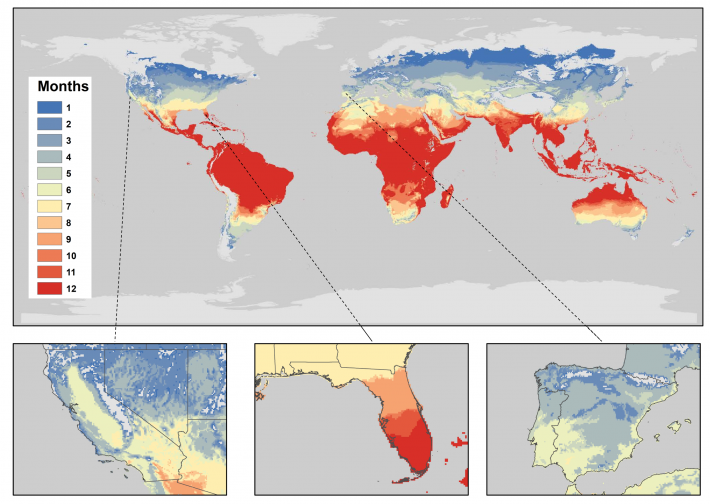July 2, 2019 (By Kirsty Scandrett, University of Florida) - New research, published in Journal of Applied Ecology maps the peak temperatures for the establishment of citrus greening disease.
|
|
Orange juice is a staple on many breakfast tables, but the future availability of citrus products is threatened by the global spread of Huanglongbing (HLB), also known as citrus greening disease. The bacterium responsible for causing citrus greening prevents the formation of commercially viable fruit and is transmitted by an insect called the Asian citrus psyllid. Both the pathogen and the insect vector have been spreading in recent years, devastating regions famous for high citrus production and threatening the future of the citrus industry. As citrus greening becomes an increasing threat to growers worldwide, the future of the industry may depend on identifying locations that do not have a high risk of production collapse.


 Credit: Taylor RA, Ryan SJ, Lippi CA, et al. Predicting the fundamental thermal niche of crop pests and diseases in a changing world: A case study on citrus greening, Journal of Applied Ecology, DOI: 10.1111/1365- 2664.13455
Credit: Taylor RA, Ryan SJ, Lippi CA, et al. Predicting the fundamental thermal niche of crop pests and diseases in a changing world: A case study on citrus greening, Journal of Applied Ecology, DOI: 10.1111/1365- 2664.13455









